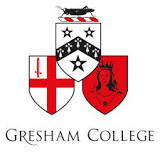Category: Medical science
Colour
Evolving in a silent, dark world, organisms developed receptors that could detect and differentiate components of the electromagnetic spectrum from the sun. Computation of the proportions of different wavelengths emitted from objects is used to form the perception of colour by the visual system, enhancing the ability to differentiate objects from background. The beauty of colour, used by individuals, artists and commerce is important in all cultures from pre-history to the present.
Correction of Optical defects: From spectacles to lasers
Despite sophisticated techniques; Laser, intraocular surgery and contact lenses; spectacles remain the most popular method for correcting optical defects of the eye. Roger Bacon (1266) proposed that convex lenses could be used for elderly people with failing sight, replacing crystals used for magnification. Printing exploded the need for spectacles and by the close of the 20th century amazing advances in surgery corrected vision defects.
The History of Cataract Surgery.
The commonest operation in the world is responsible for restoring sight to millions of blind and visually disabled people every year. From humble beginnings in India over 2,000 years ago it was refined by French surgeons in the Enlightenment. Over the last few decades this operation has been transformed from a risky operation almost identical to that performed by Victorian Surgeons, into a sophisticated quick day case procedure with extremely low complications. The development of new materials by the British aircraft industry was critical to this development and the courageous adoption of pioneering surgeons all over the world, criticised by their peers at the time, has led to the miracle of modern cataract surgery.
The human eye and vision
This introduction to the series covers the structure and function of the human eye. The historical concept of the eye as a simple image-forming device has been transformed to the modern view of the eye as a sophisticated image-processing organ. How structure and function are beautifully linked, in order to convert light energy into processed electrical signals, will be described.
Inflammatory Eye Disease
Inflammatory eye disease is the commonest cause of acquired visual disability in the young working age population. From infection to autoimmunity the consequences of inflammation blind eyes and ruin lives. The adoption of steroid therapy in the 1950's was a start but consequences of steroid therapy can be severe. From pioneering use of immunomodulation in the 20th century to biological therapies in the 21st, Professor Foster will comprehensively describe the current and future status of managing these terrible diseases.
MORE THAN A FEELING: HOW EMOTION WORKS IN THE BRAIN
Following on from the public lecture on 21 February 2007, Professor Joseph E LeDoux, New York University, Professor Keith Kendrick, Head of Cognitive and Behavioural Neuroscience, The Babraham Institute, Cambridge and former Gresham Professor of Physic and Professor Raj Persaud lead an academic seminar to discuss the issues further.
Why we see what we do
The visual system has developed to allow us to navigate in a complex and dangerous world in order to find food and to avoid danger. This survival system works by building a complex three-dimensional model based on two-dimensional data from the retina. This model is tested against "reality" and checked with information from other senses and updated if needed. The brain suppresses the complexity of this processing and we believe that vision is instantaneous, real and effortless. But is seeing just an illusion?
WIRED TO GET WOUND UP! WHY EMOTIONS ARE SO HARD TO CONTROL
Professor Joseph E LeDoux, New York University, Professor Keith Kendrick, Head of Cognitive and Behavioural Neuroscience, The Babraham Institute, Cambridge and former Gresham Professor of Physic and Professor Raj Persaud, Visiting Gresham Professor of Psychiatry.
